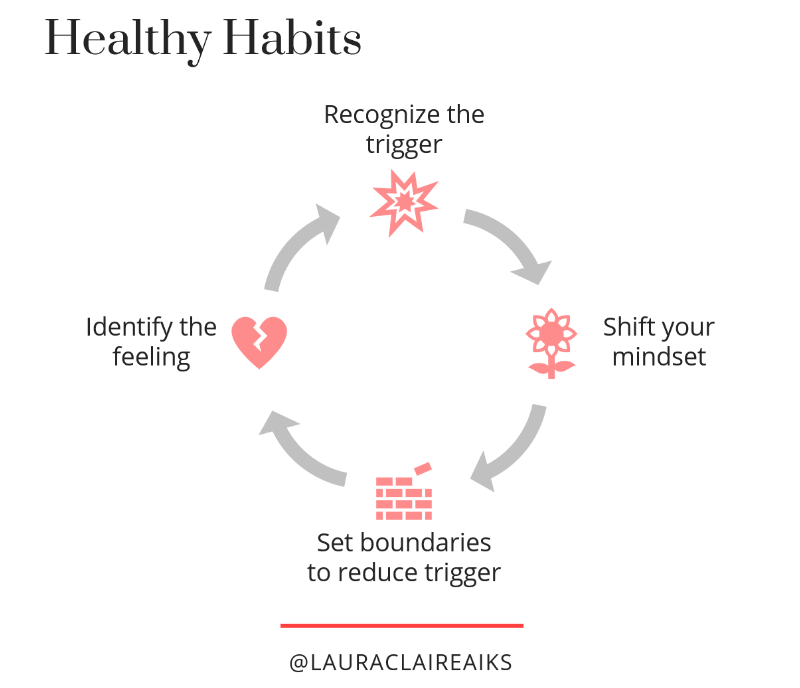If you’re anything like me, you’re growing increasingly tired hearing of the “unprecedented time” we’re in, fatigued by bleak and dividing news coverage, and flat out bored by the streams of advice on what to DO to maximize your isolation. From online learning to tik-tok challenges to virtual tours to fitness videos, the constant message we’re getting is that we must OPTIMIZE.
Hopefully you’ve also read about the mental health impact of the social withdrawal, disruption to routine, job insecurity, financial uncertainty, and fear for your health of the health of loved ones (to name a few). Even the most resilient of us are shifting to a more high-tension and cortisol-fueled natural state.
Add to that the pressure of “making the most of it”, and we’re wearing ourselves out even worse than when we were at work.
With spring in bloom, we can look to nature for one way to “optimize” – and care for our mental health. We can reflect on the seeds we can plant now for life post-COVID; and recognize that the day you plant the seed is not the day you eat the fruit.
In practical terms, this is quiet reflection on what you want, now and in the future, and introducing incremental habits now to get you there.
Times of suffering are always an opportunity to grow; specifically in this period of heightened anxiety, we have an opportunity to build mental resilience. This is the time to implement and test healthy habits to set you up for the future.
Below is one healthy habit to get you started on your seed-sowing: growing your ability to identify and regulate your mental triggers.

1. Recognize the feeling
Throughout the day, take some time to tune in to how you are feeling. You could do this by setting a reminder on your phone for every few hours to stop, sit, breathe, and check in with yourself. For a few minutes, let yourself feel what you feel without shame, judgement, or analysis – just breathe and be. Notice any physical sensations, like a constricted chest, churning in your stomach, tightness in your jaw. Then, see if you can name any emotion you’re feeling, without thinking about why or needing to change it. This could be contentment, happiness, sadness, shame, fear, shock, grief, anger, or frustration.
2. Identify the trigger
If you recognize that you are feeling something negative, take a few minutes to mentally step back through your day to see if you can determine when that feeling started. A trigger is any external factor that stimulates a negative reaction or a feeling. Perhaps it was watching the news, a missed call from a friend, or seeing something that reminded you of someone… it could even be stubbing your toe. If you don’t get anywhere at first, don’t worry, it will get easier once you’re used to checking in with how you feel.
3. Shift your mindset
This is perhaps the hardest part, because it requires you to disrupt a habitual cycle. Our thoughts, our attention, and how we spend our energy shapes our world. If we focus on the negative, on the fear, on the lacking, we notice that in our life more and more. If we can shift to focus on something positive, or the things that we DO have, we train our brains to perceive the abundance in our world.
Where attention goes, energy flows, and something grows. Here is where you choose to plant the seeds of negativity and fear, or of positivity and abundance.
I’ll give two ways to do this. One simple way to do this is to list three things you are grateful for. You can even continue to sit, breathe, and bring images of these people or things to your mind. Another is to meditate on a future vision of yourself, living a dream life where you have everything your heart desires. Notice the sights, sounds, textures, smells in your vision, allow a feeling of joy and gratitude to bubble up in your chest.
4. Build in boundaries to reduce your triggers
This step seems simple, but it’s not always easy. Once you have identified something that is triggering a negative reaction, build emotional or physical boundaries into your day to reduce your exposure to them. For example, if you experience feelings of stress when you watch the news, you could limit your screen time and ensure you do something that makes you feel good immediately after. If you tend to feel lonely or depressed when you’re tired, establish boundaries around things that negatively affect your sleep, like screen-time, food, alcohol, or staying up too late.
Write these boundaries down and form them into a daily routine. Make them small, simple, and as physical and autonomous as you can; set reminders and download apps to help (like this one to limit your social media time!).
When it comes to choosing healthy or destructive habits we are often our own worst enemy – and choosing the downward spiral can, in a weird way, feel good – like scratching an itch. We all have a choice on the seeds we want to plant now to set us up now to set us up for the future. What are you choosing?


